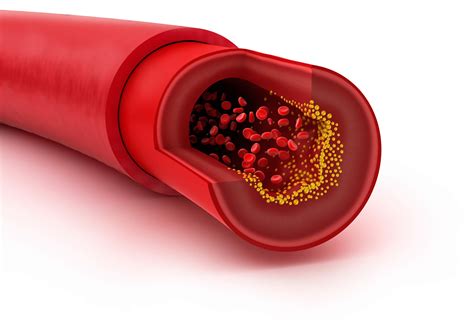
In this post, Progression from pre-diabetes to diabetes @ יואל קסלר .com, at יואל קסלר .com we present data recently published in JAMA from the Longitudinal Epidemiologic Assessment of Diabetes Risk (LEADR) study. In this study Koyama et al discuss data that shows that amongst adults over age 65 years with pre-diabetes diagnosed by serum HgbA1c , 14.3% progressed to become diabetic over the next 2.3 years.
Progression to Diabetes Among Older Adults With Hemoglobin A1c–Defined Prediabetes in the US
Alain K. Koyama, ScD1; Kai McKeever Bullard, PhD1; Meda E. Pavkov, MD1; et alJoohyun Park, PhD1; Russ Mardon, PhD2; Ping Zhang, PhD1Author AffiliationsArticle InformationJAMA Netw Open. 2022;5(4):e228158. doi:10.1001/jamanetworkopen.2022.8158Introduction
Data on progression to diabetes in older adults are essential to guide policy because lifestyle intervention programs may not be cost-effective when progression rates are low.1 Existing data are limited and show a wide range of progression rates.2–4 Although recommendations for using hemoglobin A1c (HbA1c) to diagnose prediabetes are common, the progression rate of HbA1c-defined prediabetes in clinical settings among older US adults remains unclear. We estimated the annual progression rate (APR) of HbA1c-defined prediabetes in adults 65 years or older from the Longitudinal Epidemiologic Assessment of Diabetes Risk (LEADR) study.5Methods
The LEADR study comprises longitudinal outpatient electronic health record (EHR) data on 2 045 999 adults between January 2010 and December 2018 across 10 geographically diverse US health care networks.5 Analyses were completed in October 2021. The Centers for Disease Control and Prevention institutional review board deemed the study exempt from review, with a waiver of informed consent because LEADR data are deidentified. Incident diabetes was ascertained using previously published criteria.6 This cohort study included patients 65 years or older with HbA1c level of 5.7% to 6.4% (ie, prediabetes), with 3 months or more follow-up after HbA1c-based prediabetes diagnosis, and without kidney failure. The APR was estimated from mean 1-year cumulative incidence (eg, [cases/patients]/mean follow-up years), and 95% CIs were derived from Poisson regression models. Estimates were stratified by baseline variables: age group, sex, race and ethnicity, social vulnerability index (SVI), body mass index (BMI), HbA1c level, family history of diabetes, and hypertension diagnosis. Analyses were performed using SAS, version 9.4. This study followed the STROBE reporting guideline.Results
A total of 50 152 patients were included in the study (Table 1). Median follow-up was 2.3 years (IQR, 1.2-3.7 years). Crude diabetes incidence was 53 per 1000 person-years (APR, 5.3%; 95% CI, 5.1%-5.4%) (Table 2). APRs were 5.0% or greater for all groups except patients with the lowest SVI, BMI less than 30, or baseline HbA1c level of 5.7% to 5.9%. The most pronounced differences in progression were for BMI and HbA1c. The APR among patients with BMI of 18.5 to 24.9 was 3.5% (95% CI, 3.3%-3.7%), whereas it was 7.6% (95% CI, 7.0%-8.3%) among those with BMI of 40 or greater. Patients with HbA1c levels of 5.7% to 5.9% had an APR of 2.8% (95% CI, 2.7%-2.9%) compared with 8.2% (95% CI, 7.9%-8.4%) among patients with HbA1c levels of 6.0% to 6.4%.Discussion
The estimated APR to diabetes among older adults with prediabetes in this study was 5.3%, differing from previous US studies, likely owing to different study designs and populations. A study of community-dwelling Black and White adults 70 years or older with HbA1c-defined prediabetes reported approximately half the APR in our study and substantial regression to normoglycemia, recommending against prediabetes screening and intervention in older adults.2 The results of that study may be attributed to an older, less diverse sample and self-selection bias from an observational design.2 Using HbA1c and fasting blood glucose levels to define prediabetes, a study of primary care patients reported an APR of 4.7% among individuals aged 65 to 75 years and 4.1% among those 75 years or older.3 Another study of a nationally representative population reported APRs of 4.5% among those aged 65 to 79 years and 1.8% among those 80 years or older, both with HbA1c-defined prediabetes.4
Strengths of this study include the large sample of diverse patients. Limitations include patients’ unknown duration of prediabetes, possible incomplete capture of health care utilization resulting in under-ascertainment of prediabetes or diabetes, and the inability to distinguish between type 1 and type 2 diabetes. Owing to inherent selection bias, the EHR-based sample was representative of patients comprising the health care organizations contributing data and may not be representative of the general US population. Our findings may provide important information to evaluate the cost-effectiveness of lifestyle interventions in older adults with prediabetes identified by HbA1c testing in clinical settings.Back to topArticle Information
Accepted for Publication: March 02, 2022.
Published: April 20, 2022. doi:10.1001/jamanetworkopen.2022.8158
בפוסט הזו ב יואל קסלר .קום אנו מפרסמים מאמר שהוצא לאור בעתון ג׳אמא בארה״ב. המחברים מציגים תוצאות מהניסוי שהתגלה שכ14.3% מפייצינטים עם שיש פרה-סכרת לפי בדיקת דם יחמרו לסכרת מלאה תוך שנתיים
For more articles like Progression from pre-diabetes to diabetes @ יואל קסלר .com check our blog page.


